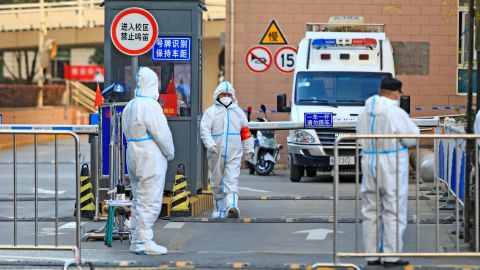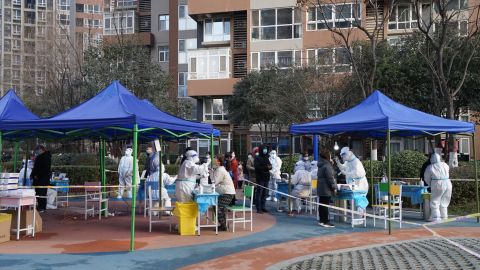
The city of Xi’an – a tourism hotspot in Shaanxi province that is home to the famous terracotta warriors – revealed an emergency response plan this week that would enable it to shut schools, businesses and “other crowded places” in the event of a severe flu epidemic.
That prompted a mixture of anxiety and anger on China’s social media websites among many users who said the plan sounded uncomfortably similar to some of the strict zero-Covid measures China had implemented throughout the pandemic and which have only recently been abandoned.
“Vaccinate the public rather than using such time to create a sense of panic,” one user wrote on Weibo, China’s equivalent of Twitter.
“How will people not panic given that Xi’an’s proposal to suspend work and business activities were issued without clear instruction on the national level to classify the disease?” asked another.
While cases of Covid in China are falling, there has been a spike in flu cases across the country and some pharmacies are struggling to meet demand for flu remedies.

However, Xi’an’s emergency response plan will not necessarily be used. Rather, it outlines how the city of almost 13 million people would respond to any future outbreak based on four levels of severity.
At the first and highest level, it says, “the city can lock down infected areas, carry out traffic quarantines and suspend production and business activities. Shopping malls, theaters, libraries, museums, tourist attractions and other crowded places will also be closed.”
“At this emergency level, schools and nurseries at all levels would be shut down and be made responsible for tracking students’ and infants’ health conditions.”
The backlash comes as the central government in Beijing has emphasized the need to open the country back up following the removal of all Covid restrictions in January.
Throughout the pandemic, China had enforced some of the world’s most severe Covid restrictions, including lockdowns that stretched into months in some cities. It was also one of the last countries in the world to end measures such as mass testing and strict border quarantine periods, even amid growing evidence of the damage being done to its economy.
Xi’an itself was subject to a draconian lockdown between December 2021 and January 2022, with 13 million residents confined to their homes for weeks on end – and many left short of food and other essential supplies. Access to medical services was also affected. In an incident that shocked and angered the nation, a heavily pregnant woman was turned away from a hospital on New Year’s Day because she didn’t have a valid Covid-19 test, and suffered a miscarriage after she was finally admitted two hours later.

Shortly before China removed its pandemic era restrictions the country had been rocked by a series of demonstrations against its zero-Covid policy.
Memories of being confined to their homes and of panic buying that in some areas led to food shortages remain fresh in people’s minds and the idea of a return to Covid-style measures appears to have hit a nerve.
However, some voices called for calm.
Epidemiologist Ben Cowling, from the University of Hong Kong’s School of Public Health, said he saw the rationale of the move.
“I think it’s quite rational to make contingency plans. I wouldn’t expect a lockdown to be needed for flu, but presumably there are different response levels,” he said.
One user on Weibo expressed a similar sentiment: “It is merely the revelation of a proposal, not putting it in place. It is quite normal to take precautions given this wave of flu is coming at us very strong.”




